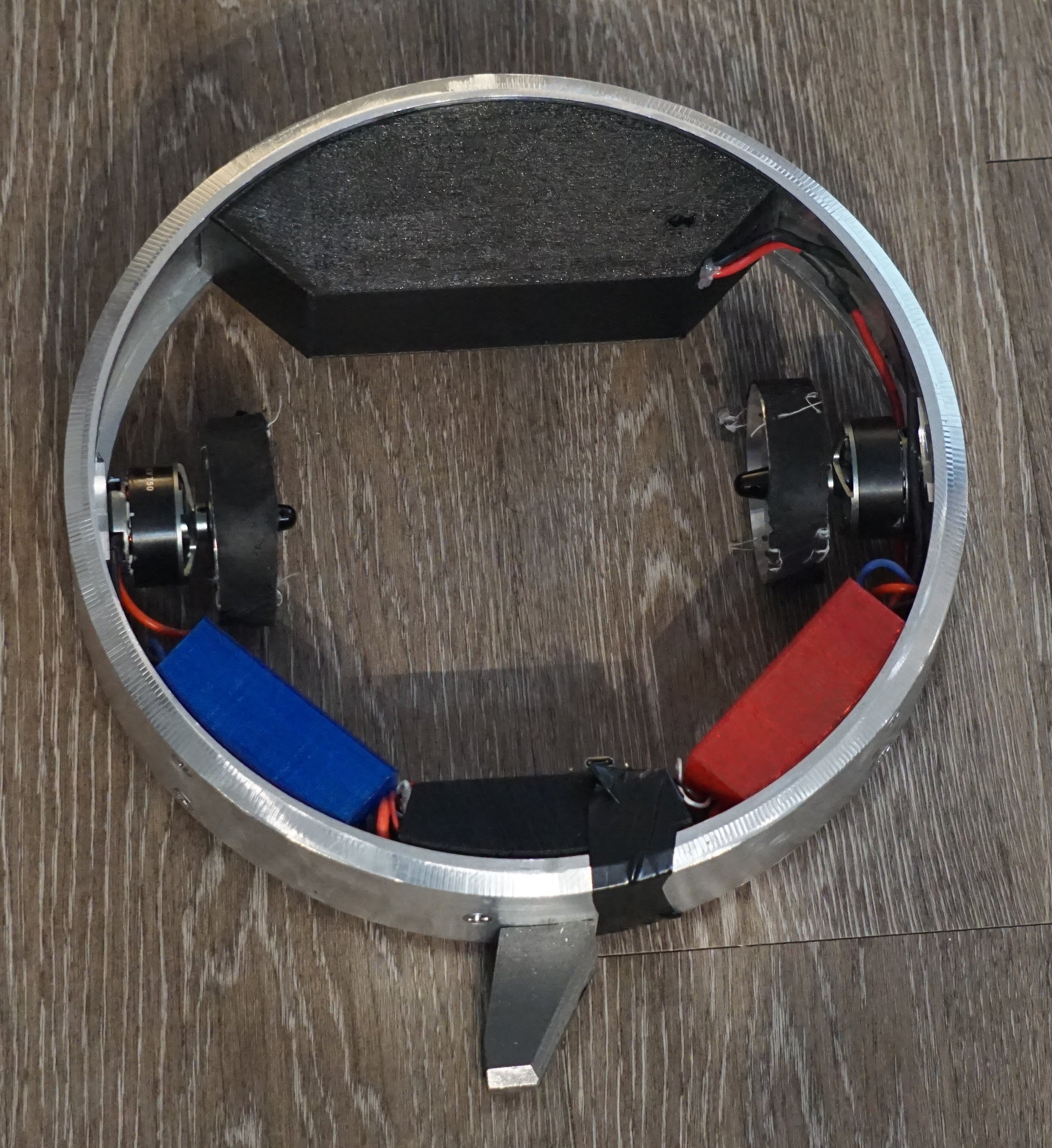Our robot is called Halo and it is a meltybrain.
There are a few reasons we went with this design.
Reason 1: Physics
Rotational inertia of a ring
The rotational inertia of a ring is double the rotational inertia of an equivalently heavy and large disk. And with the name of the game being more energy, the gain in rotation inertia can't hurt.
Reason 2: Mechanical simplicity
Our chassis is a single piece of aluminum with some stuff bolted to it. While the ring is a bit tricky to machine (my partner will get into that in a later post), the overall assembly is very simple.
This goes hand-in-hand with mechanical strength. The ring will be extremely tough to break, while keeping critical electronics efficiently protected.
Reason 3: Size
With the weight being concentrated on the ring edge, the radius of the robot can be a bit larger than is typical for the weight class. Given that rotational inertia has an r squared relationship, that gives us even more energy to work with.
There are tradeoffs of course
Space
Our only protection is the ring. If any components extend too far inward, they become much more vulnerable. More than anything, this hurts our
Drive design
Due to the scarcity of mounting surfaces, the drive motors must be rear mounted. And given the lack of bearings, all lateral force on the wheels transfers directly to the rotor of the motor. Lateral force on rotors is generally a very bad thing and should be avoided. For us, we can only reduce it by shortening the moment arm. That means no gearbox; the wheels must be direct-driven and kept close to the ring edge. Even still, if the robot gets launched and falls directly on the wheels, the lateral force on the rotors will be huge.
Direct driving wheels is hard, especially given the unusual amount of power our drive motors need to put out. Large motors with very low kV values are needed.
And with the wheels very close to the ring edge, we are vulnerable to undercutting spinners.
Accelerometer Saturation
Most meltybrains use accelerometers as their main sensing element. Typically, the accelerometer is kept close to the center of rotation so that the g forces on it don't get too high. But for us, we can only mount our accelerometer very far away from the axis of rotation. At full speed, we expect our accelerometer to experience over 300g's!
Over the next couple posts I'm going to dig into the details of Halo, starting with the electronics.

